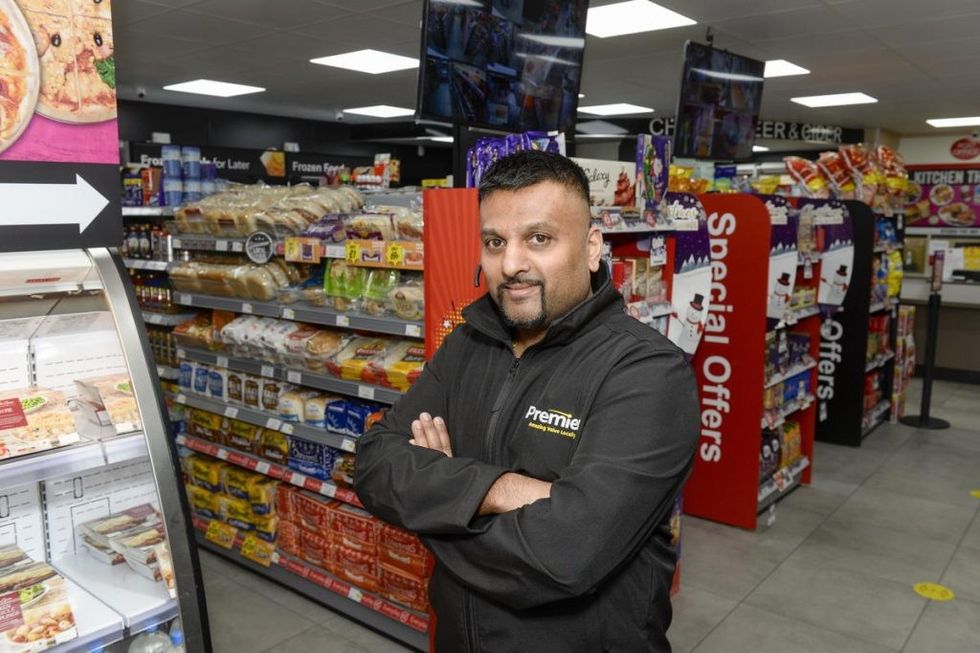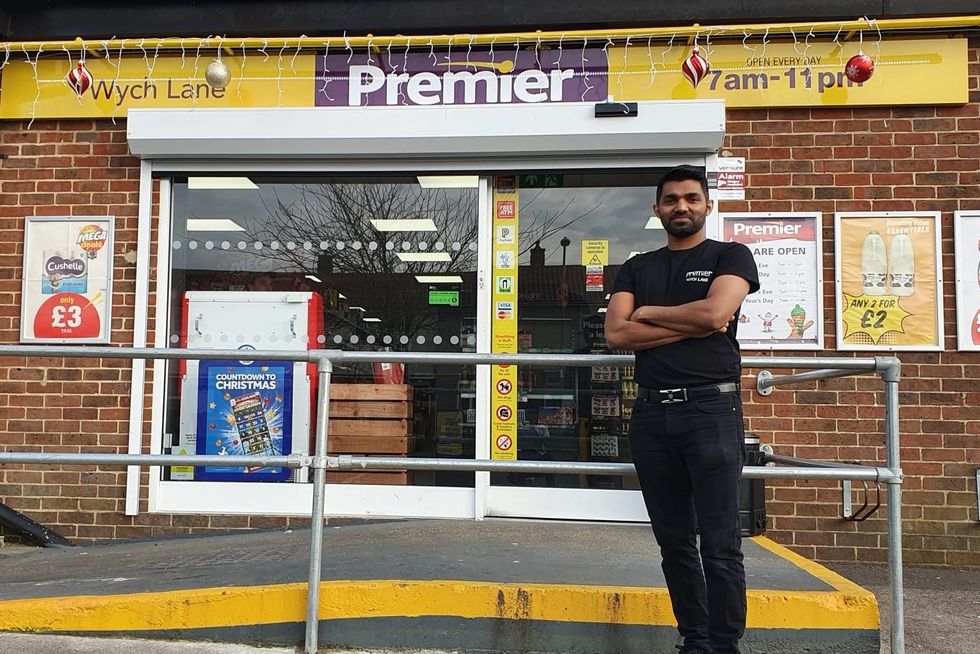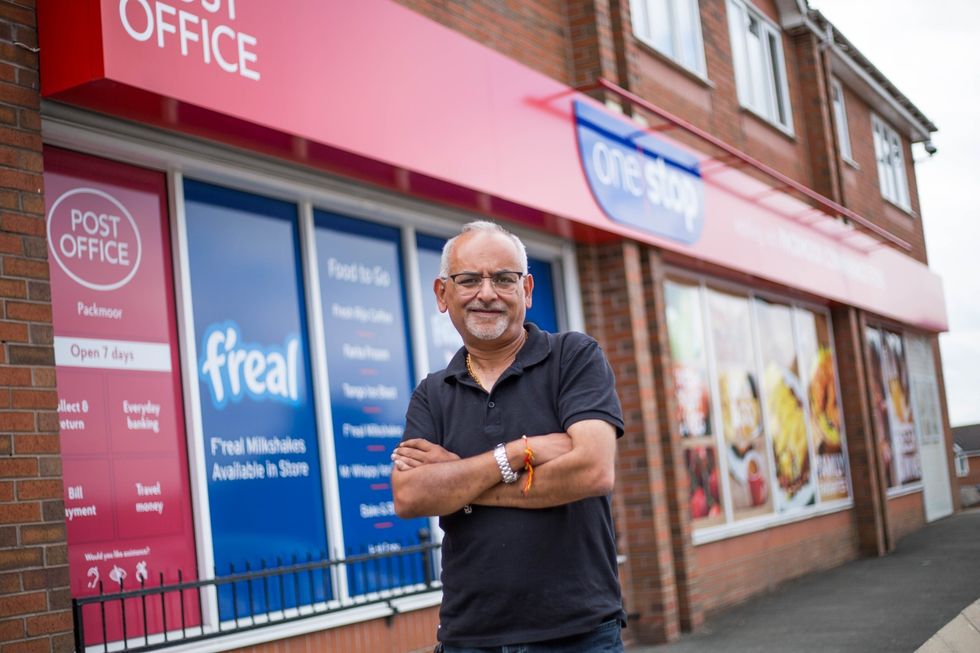Hammered by the double whammy of a rise in National Insurance Contributions (NICs) and an increase in the National Living Wage (NLW), plus reductions in business rate relief, convenience store owners are being forced to take some harsh and radical decisions to stay afloat, finds Asian Trader.
From April, Employers’ NICs increased from 13.8 per cent to 15 per cent, while the threshold – the point at which employers begin to pay NI on an individual’s salary – has been reduced from £9,100 to £5,000.
To put this in perspective, in a typical c-store (nine colleagues, 196 total paid hours per week), the change in NIC will result in an increase from £8,170 per year to around £12,606 per year in the business’s annual payroll bill.
Thanks to reduction in Retail, Hospitality and Leisure (RHL) relief from 75 per cent to 40 per cent, business rates are also set to rise. A store with a rateable value of £25,000 will now face a payable rate of £7, 485, which is more than double what it was in 2024.
Additionally, NLW rose from £11.44 to £12.21 per hour. For 18–20-year-olds, it jumped by a record £1.40 to £10, marking the first step towards a single adult rate.
According to convenience sector body ACS, the cost increases would amount to over £666 million for the convenience sector in the coming year. And that’s without factoring in the tsunami of incoming legislation and regulatory burdens.
While Chancellor Rachel Reeves hopes to boost consumer confidence, for retailers these moves are hitting like a double-edged sword.
When Asian Trader spoke with leading convenience retailers, it became clear that the impact of rising costs is already being felt on the shop floor.
In a sector that runs on razor-thin margins, these added costs are not just inconvenient; they are proving to be existential.
Jobs are being lost. Owners are overworked. Investments are stalled. And the mood is despondent.
Bracing for impact
In Wellingborough, Budgens Berrymoor owner-retailer Biren Patel has decided to pause investment plans for this year.
“It's very difficult to maintain the balance between not spending too much on wages and keeping the staff happy.
“We haven't reduced contract hours but in future, we will have to cut down on overtime and new recruitment,” Biren confided to Asian Trader.

“We are not considering investing in the business due to the current volatile market. We don't know what the future holds – whether it will get better or worse. So we decided not to risk it.”
Further south in Truro, the story is no different.
Retailer Judith Smitham, who runs Trelander Stores and The old Dairy Pydar store, has always been focused on good customer service. Today, she stands at a crossroads.
Smitham told Asian Trader, “Staff salaries have always placed me in a dilemma because £12.21 [per hour] is probably not enough for someone to pay all the bills and have a bit spare at the end of the month.
“We usually pay our staff, who have been with us longer (but with no extra responsibility), 31p an hour more than minimum wage, but not this year.
“We have made anticipatory changes since the autumn, and have used management to cover all holidays to save where we can.
“It feels relentless, like dodging a meteor shower of increases coming from every direction, with the biggest cost to the business now being staffing.”
Meanwhile, in Peterborough, retailer Neil Godhania, owner of Neil's Premier in Tyesdale, is throwing everything at the situation from scrutinising stock, training staff, and trying to keep morale and margins above water.
He told Asian Trader, “We are closely monitoring stock levels to reduce waste, optimising our product range to focus on higher margin items, and negotiating better supplier deals.

“Additionally, we are actively promoting multi-buy offers to drive sales volume, helping offset the increased costs. "While reducing staff hours is always a last resort, we are forced to review our shifts to ensure maximum efficiency during peak trading hours.
“Also to support our team, we’re prioritising training so staff can multitask and cover different roles when needed, ensuring we maintain service levels without overburdening individuals.”
But even for the most optimistic, the financial squeeze is putting the brakes on big plans.
"The financial pressures have made us more cautious about major investments, but we are still committed to growth.
“So rather than delaying completely, we are focusing on a small refit. This will upgrade the store and hopefully enhance customer experience through better merchandising and signage.”
In Hampshire, retailer Imtiyaz Mamode, owner of Premier Gosport, is also adapting but not without some tough decisions.
The store, which now employs 10 people, recently had to let go two staff workers.
Mamode said, “We used to have three staff per shift. I have now reduced it to two staff per shift to reduce the hours. I have done it after meticulous planning to make sure no one is overloaded with work.
“I am hoping to invest the money that will be thus saved back into the store by the end of the year.”
In Greater Manchester, retailer Mos Patel, who runs Premier Heyside in Oldham and Family Shopper in Ashton-Under-Lyne, has been hit hard.
Mos stated, "The NI contribution has hit hard. I had to let go two staff and now we are running on bare minimum.
“Even introducing new lines is a struggle. Customer trends have shifted too. Impulse buying’s dropped big time, as shoppers are only buying what they actually need.”

Recognised in 2021 as Asian Trader’s Food to Go Retailer of the Year owing to an exceptional range of hot and fresh food made by trained chefs, Mos recently had to take the painful call to shut down the kitchen and focus only on sandwiches on-the-go now.
Calling it a “tough decision”, Mos shared with Asian Trader, “We monitored sales, ingredients cost packaging and wages over five months and it wasn’t affordable.
“Hopefully if the opportunity arises and situation improves, then we can introduce it again.”
Elsewhere in Staffordshire, long-time veteran retailer Dee Sedani is also tightening the reins and has paused investment plans in his stores.
“Currently it seems we can't reduce the hours as each day seems to be different on the customer count.
“The new increases in costs are certainly not helping us in this year's budget of investment or refits. We are not sure where we stand in terms of the future and growth.”
Pricing debate
In the current climate, pricing for independent stores is increasingly becoming a Catch-22 situation. An obvious way to combat rising costs is to increase the costs of products and services to earn more margin, but when consumers are shopping around more for the best deals, offering lower prices becomes even more crucial.
PMPs work great in this regard in gaining customer trust though the arrangement seems to be far less kind to retailers when it comes to margins.
Like most c-stores, Sedani’s are big on PMPs, due to which he does not have much control over the prices.
He stated, “However, I am aware that at the same time we need to show value on the customer side.
“Since we cannot control the prices, we are focusing more on our range, quality of service and store standards. The supermarkets are anyway in price war again, so increasing prices doesn't help either.”'
Like his peers, Mos is also feeling stuck with PMPs’ razor-thin margins.
He said, “Margins haven’t improved at all on PMPs and we can’t influence prices so we are stuck with rising costs with no way to cover them. All this is making operations extremely difficult.”
Baffled at how to pass on the increase in costs, both Biren and Godhania stated how they are slowly and cautiously testing waters with non-PMP ranges.
Biren shared with Asian Trader, “We have increased a little margin on non-price marked products. But it's very difficult to compensate against the real increase. At the end of the day, we do want customers coming through the door!”
Godhania agreed, “While PMPs offer value perception to customers, they squeeze our margins, especially on high cost categories.
“We’re actively looking to move to non-PMP alternatives in key categories to regain some pricing control while maintaining competitiveness.”
Mamode however does not intend to budge from PMPs so as not to lose his customer base.
He explained, “We are still very much focused on PMPs and not going to switch anytime soon.
“Shoppers nowadays have become very savvy; some of them even check prices online while they are in the store to make sure they are getting the lowest possible prices.
“I am more focused on rather increasing the basket size than increasing my margin.”
Braving ahead
Despite the pressure, convenience is finding ways to move forward, primarily by evolving with tech and innovation.
Mamode for instance has hopes pinned on Booker’s Scoot, which is currently in the trial phase, to increase his sales though rapid delivery as well as from adding new lines.

Earlier this April, he introduced a cotton candy machine, most probably first-of-its-kind in convenience stores in the UK and definitely the first in the region.
Biren, who has always been an early adopter when it comes to tech, vouches heavily on the evolution with changing times.
He said, "We have invested in solar panels to cut down energy costs. Also, we have invested in self-scanning check-outs to reduce the staff cost. Initially my team wasn't confident, but I took the risk.
“Not only did it reduce the staff costs but my customers love it. The shop also looks modern.”
Pressured by increased costs and depleting margins, Godhania too is leaning on technology such as self-checkout systems to navigate this new reality.
“Additionally, we’re using data to better understand customer purchasing patterns, allowing us to stock smarter and reduce unnecessary costs,” he said.
Echoing the wider sentiment, Godhania is calling on more support for convenience stores both in business rates relief and supplier pricing regulations to create a fairer playing field.
“Small independent retailers are the backbone of local communities, but increasing costs are making it harder to stay competitive.
“A more sustainable approach to wage increases, alongside better financial support for small businesses, would help us continue to serve our communities without compromising on service or employment opportunities,” he said.
As rightly pointed out by Smitham, the main difference for retail as opposed to most businesses is the fact that the “shelves are full of money, but money is never in the bank and the bills have to be paid out of a profit margin”.
“One can only hope that customers will buy more, trade up a little but invariably every spare penny is being slowly squeezed from them as well,” she said.
Clearly, the independent retailers are adapting the best they can but the increase in costs is indeed catastrophic.
The question arises whether the government truly wants “prosperity for working people”. If so, why is it abandoning the small, often family-run stores that fuel local economies, provide vital jobs, and serve communities every single day? Is that fair or even sustainable?








